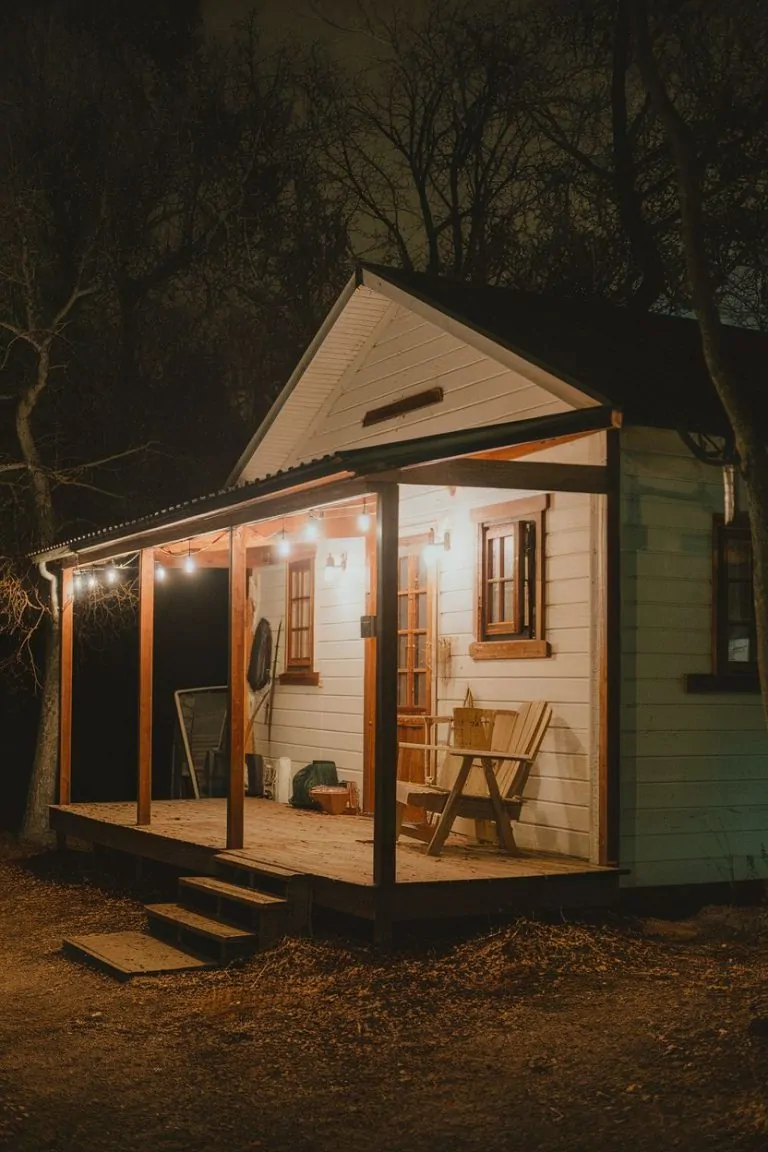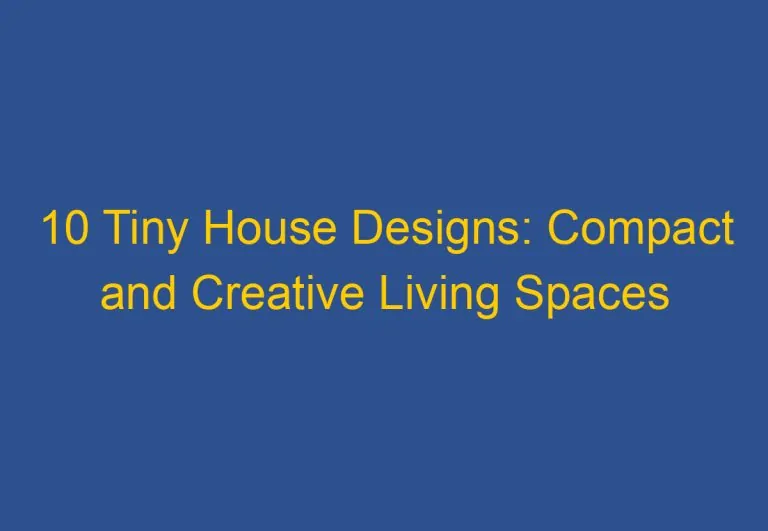15 Beautiful Tiny Home Exterior Design Ideas to Enhance Your Curb Appeal
Tiny homes have gained popularity as people seek simple living and greater freedom. With their compact designs, these homes can be both functional and stylish. Choosing the right exterior design can enhance the appeal of a tiny home while reflecting the personality of its owner.
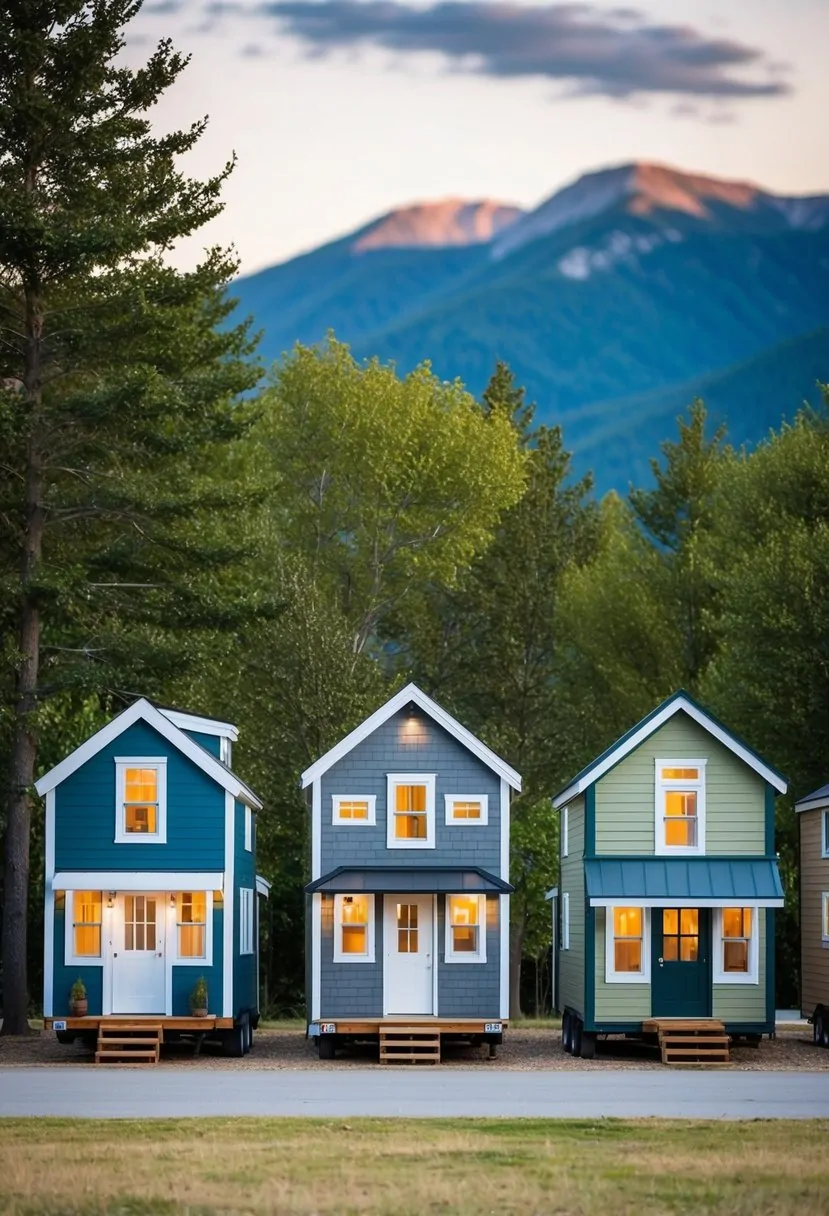
There are countless options for creating a unique and inviting look for a tiny house. From selecting the right materials to considering color schemes, the exterior can transform a small space into a true retreat. Embracing creativity in design allows individuals to maximize the charm of their tiny abode.
Modern A-frame Facade

The Modern A-frame facade has gained popularity for its unique and striking design. This style features a triangular shape that offers both aesthetic appeal and functionality.
Large floor-to-ceiling windows are a common feature in these homes. They provide natural light and create a connection to the outdoors. This openness allows the interior to feel more spacious and inviting.
Designers often choose sleek materials like metal, glass, and composite wood for a contemporary look. These materials enhance the clean lines that define modern A-frame designs.
Color also plays a crucial role. Dark exterior colors, like deep grays or blacks, paired with warm wood accents can create a bold contrast. This combination adds warmth and makes the facade stand out even more.
The roofline is another key aspect. A steeply pitched roof not only adds to the style but also helps with snow runoff in colder climates. This practical feature makes A-frames suitable for various environments.
Overall, the Modern A-frame facade blends style and function. It reflects a commitment to contemporary design while providing a cozy, inviting space to live.
Japanese Zen Garden Entrance

A Japanese Zen garden entrance offers a tranquil space that welcomes guests with peace. It often features clean lines and natural materials, creating harmony with the environment.
Stone pathways can guide visitors through the garden. These paths can be lined with carefully placed pebbles or small rocks. This adds texture and calmness to the entrance.
Incorporating plants like moss, ferns, and small shrubs enhances the serene atmosphere. Minimalism is key; fewer plants often provide a more open feel. Lanterns made of stone or wood can light up the path, adding a soft glow at night.
A small water feature, like a bamboo fountain, can bring soothing sounds of flowing water. This element adds to the relaxing ambiance while promoting a sense of balance.
Placing a pagoda sculpture near the entrance can also add a touch of elegance. It serves as a focal point and invites curiosity. Overall, a Japanese Zen garden entrance is not just beautiful but also a peaceful retreat.
3) Reclaimed Wood Paneling
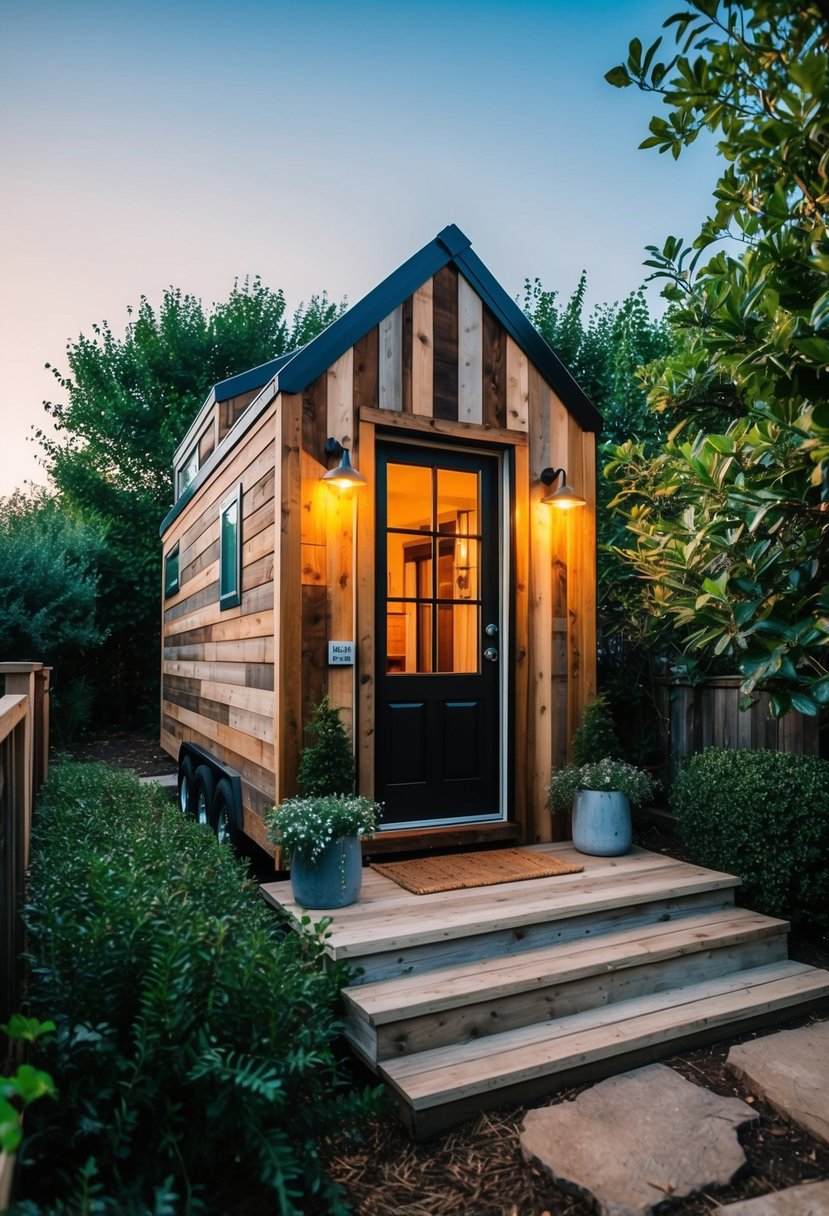
Reclaimed wood paneling offers a unique charm to tiny home exteriors. This material comes from old buildings, furniture, or other sources, giving it a history that can enhance the home’s character.
Using reclaimed wood helps the environment by reducing waste. It can be sourced sustainably, making it an eco-friendly choice for those who care about the planet.
The warm tones of reclaimed wood create an inviting feel. Homeowners can choose from various types of wood, like pine or cedar, each bringing its own look and appeal.
Paneling can be used in creative ways. It can cover entire walls or be combined with other materials, like metal or glass, for a modern twist.
Maintaining reclaimed wood is essential. Regular sealing and cleaning keep it looking great and protect it from the elements.
This material is a good option for those seeking a blend of style and sustainability in their tiny home design.
Rustic Stone Chimney
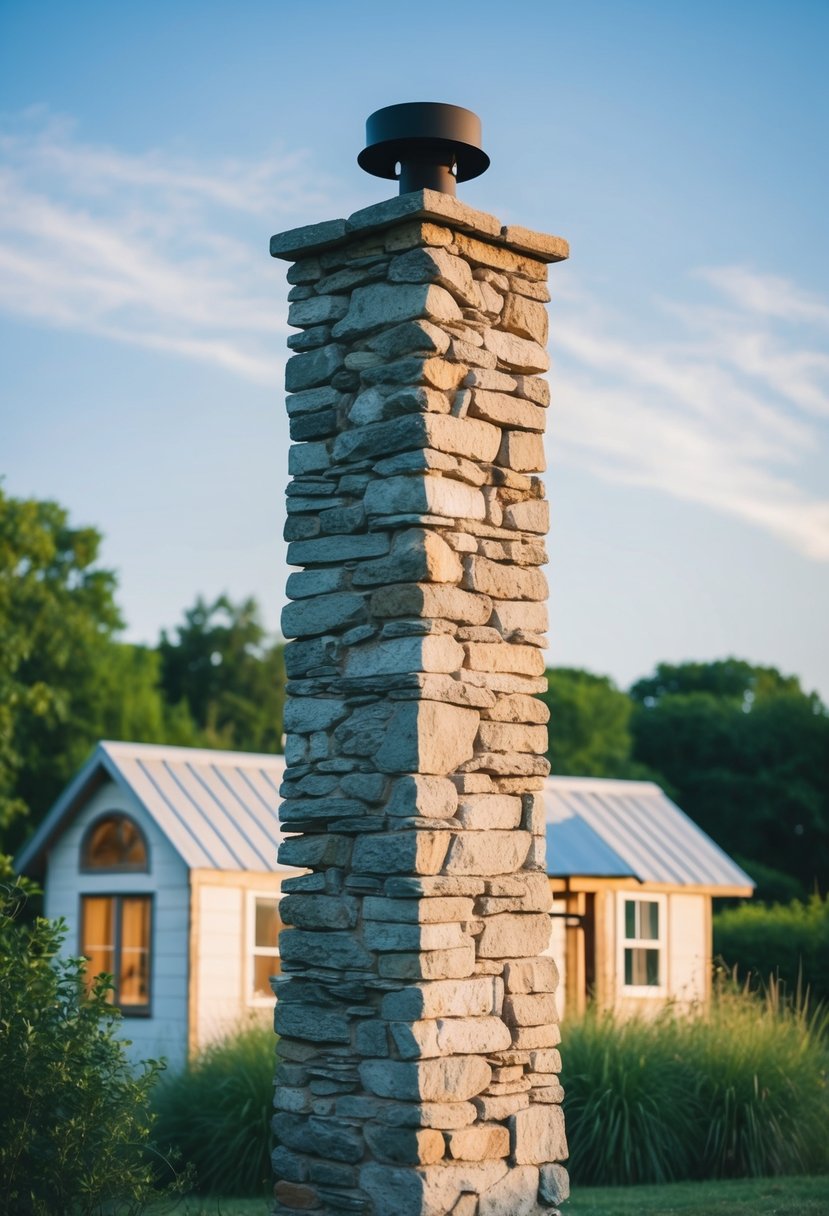
A rustic stone chimney enhances the charm of any tiny home. It offers a natural look that blends well with wood and other earthy materials. Stone can provide a strong focal point, drawing the eye upward and adding height to the design.
Using reclaimed stone can add character and history. Each stone has its own unique texture and color, making the chimney one-of-a-kind. This choice can evoke a sense of warmth and comfort.
Incorporating a chimney into the design also serves a practical purpose. It can efficiently vent smoke from a fireplace or wood stove, making it functional as well as beautiful.
The stone’s durability ensures the chimney will last for years with minimal maintenance. Proper installation is key to prevent water damage and ensure safety.
Adding a rustic stone chimney can elevate the entire exterior of a tiny home. It complements various design styles, from modern to traditional, making it a versatile choice.
5) Cedar Shake Roof

A cedar shake roof adds charm and character to tiny homes. Made from split logs, cedar shakes create a natural, rustic appearance. Their texture stands out and can complement various home styles.
Cedar is known for its durability and resistance to decay. This makes it a practical choice for roofing, especially in different weather conditions. With proper maintenance, a cedar shake roof can last for decades.
The color of cedar shakes can vary from light tan to deep brown. This range allows homeowners to choose shades that match their house design. The warm tones of cedar blend well with other natural materials like stone or wood siding.
Moreover, cedar shakes provide good insulation. This helps keep homes warm in winter and cool in summer. This feature can improve energy efficiency, an important factor for tiny home living.
In addition, the natural wood is often considered eco-friendly. Many people appreciate using sustainable materials in their homes. Cedar shakes are a great option for those looking to bring nature closer to their living space.
Materials And Colors
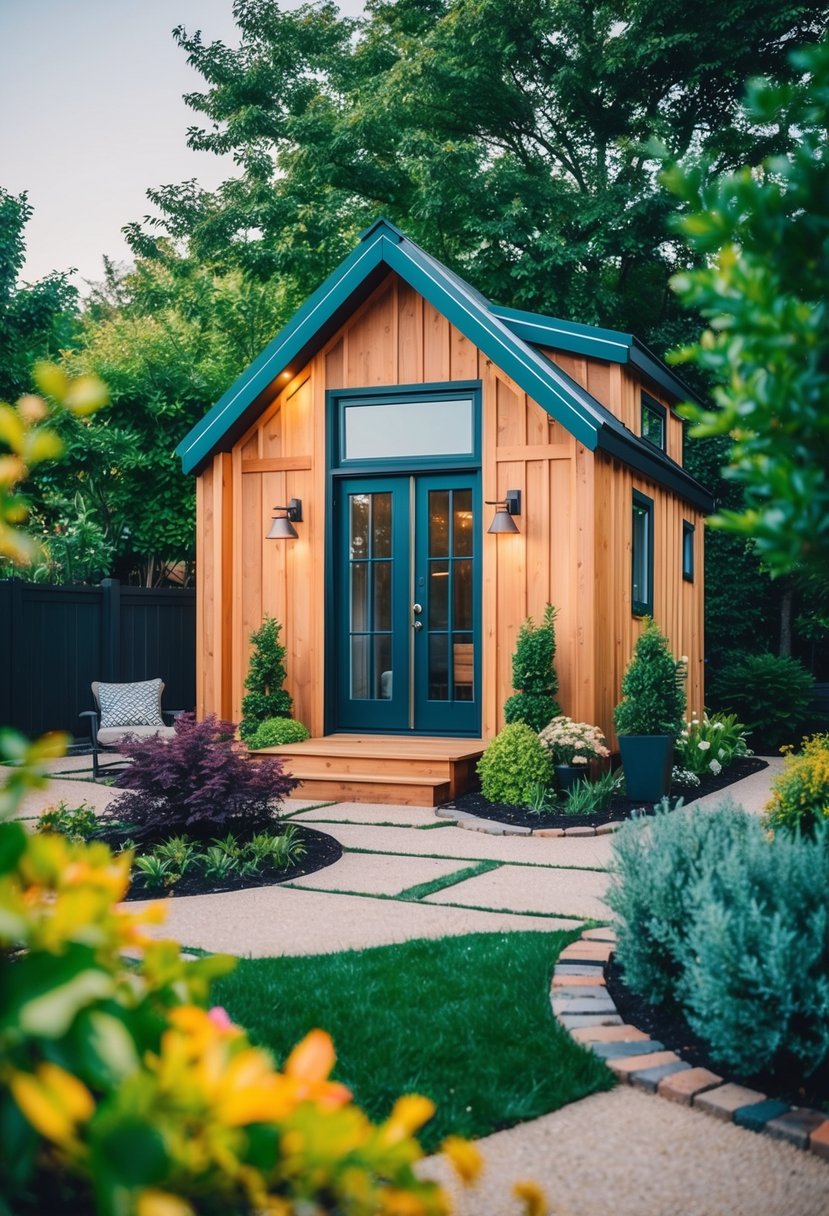
Choosing the right materials and colors is essential for tiny home exteriors. Different materials can create unique looks and serve practical purposes.
Common Materials:
- Wood: Offers a warm and natural feel. It can be painted or stained in various colors.
- Metal: Durable and modern. Steel or corrugated metal can add an industrial touch.
- Vinyl: Low maintenance and available in many colors. It can mimic the look of wood or other materials.
- Stone: Gives a rustic appearance and can enhance curb appeal.
Effective Color Choices:
- Light Colors: Whites, pastels, and soft earth tones can make a small home feel larger and more inviting.
- Dark Colors: While they can create a bold look, dark shades may make spaces feel smaller. Use sparingly for accent areas.
- Eclectic Combinations: Mixing colors and textures, like colorful tiles and plants, can create a vibrant outdoor look.
Homeowners should also consider eco-friendly materials. These options are sustainable and often add a unique charm to the tiny house.
Tips for Color Coordination:
- Use a dominant color for the main structure.
- Choose accent colors for doors or trim.
- Think about how the colors harmonize with the surrounding environment.
Balancing materials and colors can greatly enhance the aesthetic and feel of a tiny home.
Sustainable Design Elements
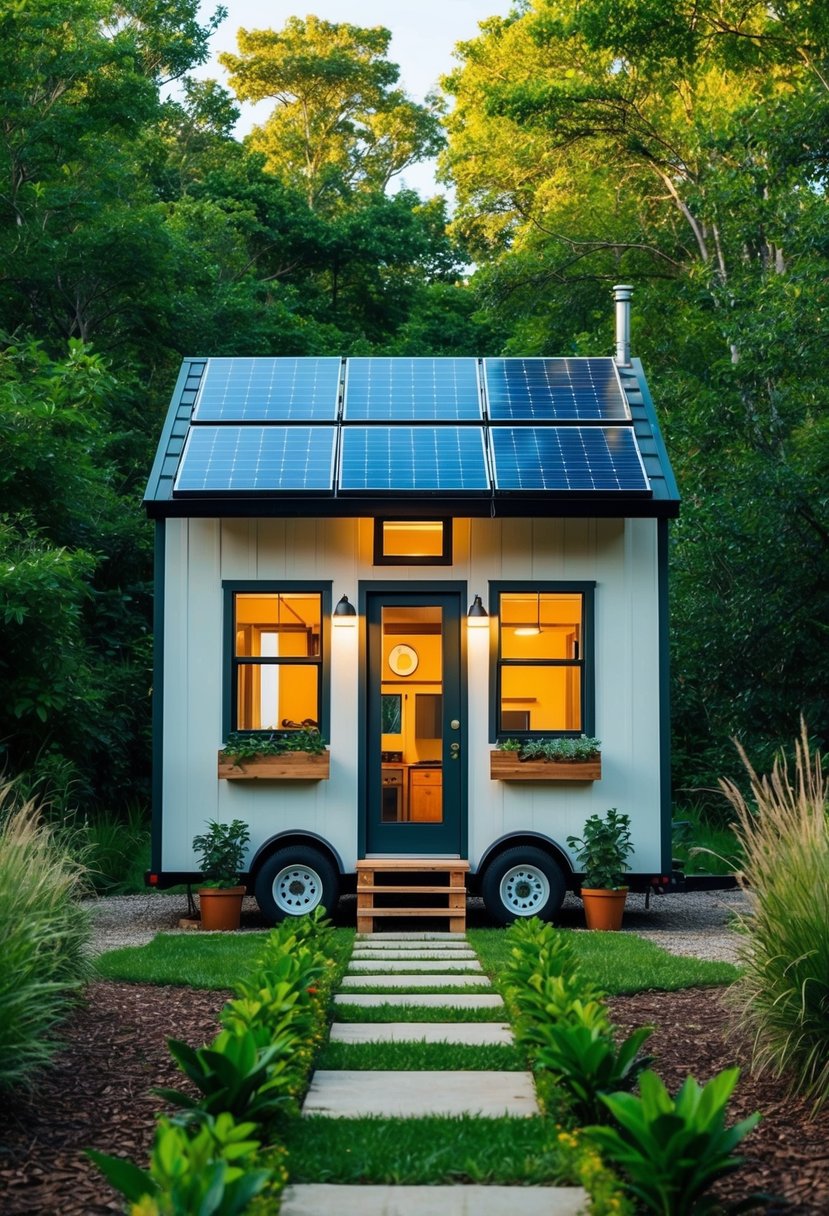
Sustainable design in tiny homes focuses on using materials and practices that benefit the environment. Here are some key elements to consider:
- Reclaimed Materials: Using reclaimed wood and other materials can reduce waste. They give a unique character while being friendly to the environment.
- Energy Efficiency: Incorporating energy-efficient windows and insulation can significantly lower energy use. This saves resources and money in the long run.
- Solar Panels: Many tiny homes use solar panels to harness energy. This reduces reliance on traditional power sources and cuts down on utility bills.
- Green Roofs: Installing a green roof can improve insulation and support local wildlife. It helps manage rainwater and adds natural beauty.
- Low-Impact Siding: Choices like bamboo or recycled metal siding are both durable and sustainable. They require less maintenance and have minimal environmental impact.
Here is a simple table that summarizes sustainable materials:
| Material Type | Benefits |
|---|---|
| Reclaimed Wood | Reduces waste, unique aesthetic |
| Bamboo | Fast-growing, strong, renewable |
| Recycled Metal | Durable, low maintenance |
| Eco-Friendly Paint | Non-toxic, better air quality |
Using these sustainable design elements not only creates a beautiful tiny home but also aligns with eco-friendly living values.
Incorporating Renewable Energy

Tiny homes can benefit greatly from using renewable energy sources. This approach not only helps the environment but also reduces energy costs.
Here are some common options:
- Solar Panels: These are popular for tiny homes. They capture sunlight and convert it to electricity, providing power without relying on grid energy.
- Wind Turbines: For areas with consistent wind, small wind turbines can generate electricity. They work well alongside solar systems for balanced energy production.
- Rainwater Harvesting: Collecting rainwater can supply water needs. This system reduces dependence on municipal water services and promotes sustainability.
- Compost Toilets: These toilets use little to no water, making them eco-friendly. They reduce the need for traditional plumbing and waste systems.
- Insulation: Good insulation is important. It keeps homes warm in winter and cool in summer, reducing heating and cooling needs.
Benefits of Incorporating Renewable Energy:
- Cost Savings: Reduced energy bills come from using sunlight and wind.
- Environmental Impact: Supports a cleaner planet by lowering carbon footprints.
- Self-Sufficiency: Owners gain independence from utility companies.
By integrating these renewable energy options, tiny home owners can create a more sustainable and efficient living environment.
Eco-Friendly Siding Options
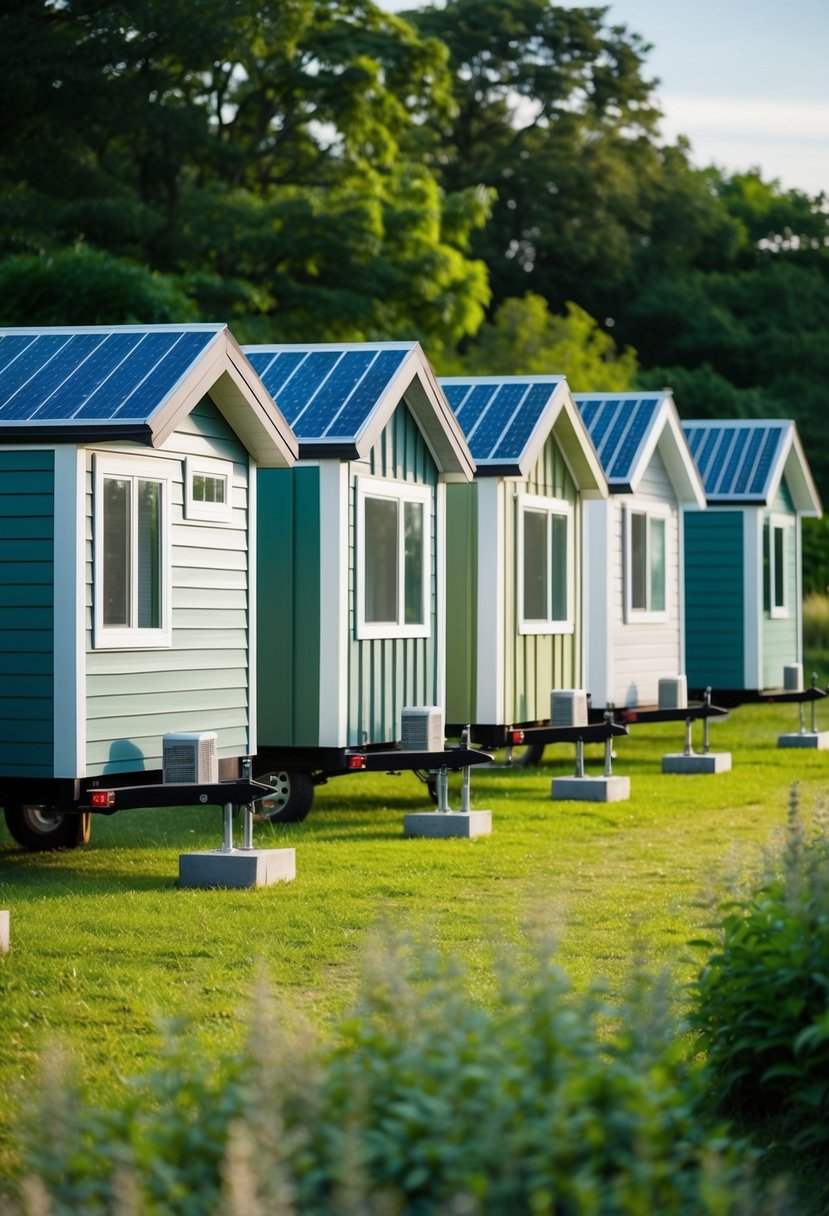
Choosing eco-friendly siding is a smart choice for those looking to minimize their environmental impact. Here are some popular options:
- Reclaimed Wood Siding: This material uses wood that has been salvaged from old buildings. It adds character with its unique patinas and imperfections. Plus, it doesn’t require cutting down new trees.
- Bamboo: Fast-growing and renewable, bamboo is a great sustainable option. It is lightweight, strong, and can be used for both siding and decorative accents.
- Recycled Steel: Steel siding made from recycled materials is highly durable and weather-resistant. It has a long lifespan and needs minimal maintenance, making it a reliable choice.
- Natural Fiber Cement: This material combines cement with natural fibers like cellulose. It mimics the look of wood but is made from sustainable resources and has high durability.
- Vinyl Siding (Recycled): While traditional vinyl has environmental concerns, recycled vinyl is made from repurposed plastics. It offers a variety of colors and styles, helping to reduce waste.
Each of these options contributes to a sustainable lifestyle while enhancing a tiny home’s aesthetic. Selecting eco-friendly siding supports environmental conservation and provides unique design opportunities.


